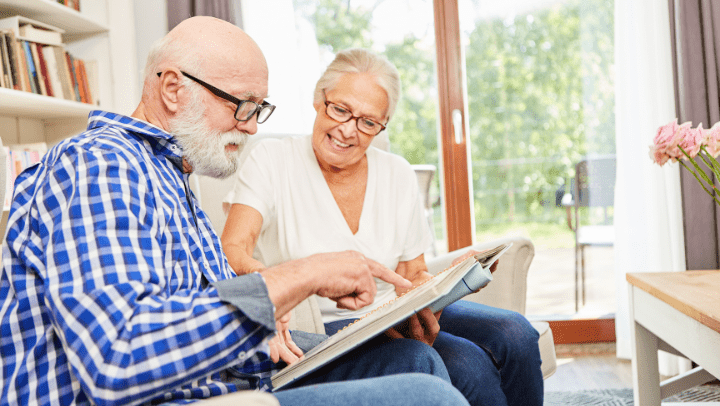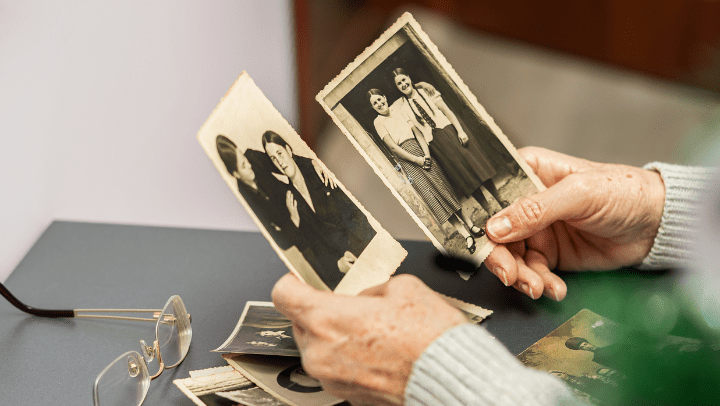
Your treasured memories deserve celebration. Studies from the United States, Europe, and Japan reveal how creative activities like photo albums and collages help seniors maintain their sense of identity. These activities also encourage meaningful social connections. You can tell your unique story through thoughtfully arranged collections of family pictures, vintage items and personal keepsakes.
Why Memory Collages Matter
Memory collages work as a therapeutic tool that helps people process life experiences and integrate personal stories. These visual stories do more than look appealing – they bring real psychological and emotional benefits that boost quality of life.
Making memory collages comes with several benefits:
- Better Self-Expression: Collages let you share emotions and experiences that words can’t fully capture. This becomes valuable when verbal communication changes as people age.
- Brain Exercise: The process of picking and organizing images uses multiple brain functions and helps people make sense of their life stories. The creative work sparks memories and builds better personal narratives.
- Working Through Emotions: These collages give people a safe way to explore and process their feelings. Choosing meaningful pictures and arranging them helps resolve past issues while celebrating life achievements.
Studies show that creating collages helps people see themselves more completely. The main photos often show what matters most to them, which builds a positive identity and promotes gratitude for relationships.
These visual stories make great conversation starters and encourage story-sharing between generations. They preserve family histories so children and grandchildren can learn about their heritage, traditions and identity.
Getting Started with Memory Collages
Essential Supplies for Your Memory Collage:
- A sturdy base material (cardboard, posterboard, or canvas)
- Adhesives (archival-safe photo strips, dry-clear glue)
- Scissors and simple crafting tools
- Decorative elements (ribbons, stickers, craft paper)
- Personal memorabilia and photographs
Pick a meaningful theme for your collage before you start creating. You might want to focus on family histories, travel adventures, cherished recipes, or milestone celebrations. A temporary folder or workspace helps you access everything easily during the creative process.
The best photographs and memorabilia tell compelling stories and bring joy. Old clothing scraps, childhood artwork, postcards and handwritten notes add depth and texture to your creation. Note that each piece should add to the story you want to share.
Tips for Photo Selection:
- Mix close-up and distance shots to create visual variety
- Include images from different time periods
- Choose photos that match your chosen format
- Think about scanning important photos to preserve originals
Seniors interested in exploring their family history will find family tree collages a great starting point. This style lets you showcase multiple generations while documenting important family connections. Travel memory collages can capture past adventures beautifully through photographs, postcards and personal stories.
Recipe collages offer another meaningful way to preserve culinary traditions for future generations. The combination of family recipes with photos of finished dishes becomes proof of cherished family gatherings.
Step-by-Step Creation Guide
You’ve gathered your materials, so let’s take a closer look at creating your memory collage step by step. Success comes from thoughtful arrangement and careful assembly of your chosen pieces.
Preparing Your Layout: Start by placing your photos and memorabilia on your base material without adhesive. This gives you room to play with different arrangements until you find the perfect composition. Try mixing close-ups with wider shots – it creates visual interest and tells a complete story.
Creating Visual Flow:
- Your layout should have elements distributed evenly across the surface
- Different textures and materials add depth
- Small spaces between items provide visual breathing room
- Important faces and details should remain clearly visible
A photo of your final arrangement serves as a helpful reference guide when you start gluing items down. The best way to preserve your memories is to use archival-safe adhesives and handle vintage photos with clean, dry hands.
Adding Personal Touches: Handwritten notes, dates or captions beneath photos help preserve context. Fabric scraps, dried flowers or other textural elements boost the sensory experience. These details make each collage special and meaningful.
Professional Tips:
- Don’t use too much adhesive – it can warp the material
- Start from the center and work outward to keep things balanced
- Keep completed collages away from direct sunlight
- Save digital copies of precious photos as backup
Display and Preservation: Your collage needs to dry completely before display. UV-protective glass helps guard against fading. The finished piece becomes a treasured conversation starter at Heritage at Oakwood Hills that sparks meaningful discussions and preserves precious memories for generations to come.
Preserving Life’s Moments
Memory collages are great tools to preserve life’s precious moments, particularly in your golden years. These creative expressions are nowhere near simple decorations – they build bridges between past and present and deepen bonds across generations.
Starting your memory collage trip might seem daunting initially. Each photograph and memento tells a chapter of your unique story. If you are looking for an assisted living community in Eau Claire, WI, to keep exploring creative projects, check out our community, Heritage at Oakwood Hills. Contact us at (715) 831-9118 to schedule a tour!


